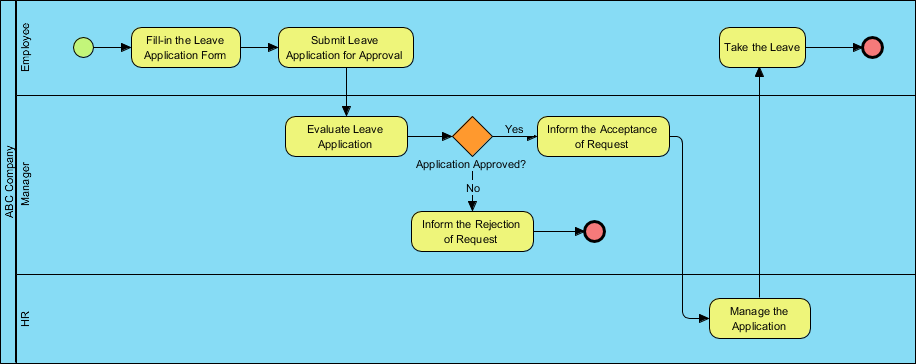Key Points
References
Key Concepts
BPM - Business Process Modeling
https://en.wikipedia.org/wiki/Business_Process_Model_and_Notation
Lucidchart diagrams
https://www.lucidchart.com/pages/solutions/it/architects
Has templates, libraries for UML and BPM diagrams
free account for 3 online projects only
https://app.lucidchart.com/user/145292726#/
jmswt
Enterprise Architecture certification prep course from eacoe.org
- Our Signature Quick-Start Toolkit, Including Templates, Analysis Tools, & More
- Project Management
- Phases of Implementing an Enterprise Architecture Strategy
- How to Create Models for Managing the Enterprise, including Process Models, Organization Models, and More
- How EA Provides Value to the Enterprise
- Establishing the Architecture Scope & Deliverables
- Exploring Real World Examples of Enterprise Architecture Models
- How to create an “Evergreen “ Model That Will Serve The Organization For Years To Come
- The Components Needed for A Successful Transition Strategy
- How to Prepare for Ongoing Architecture Refinement & Usage
- How to Address Organizational Resistance to Change
- Short Term Approaches for Long Term Success
- Conducting a Successful Review & Verification Session
- Architecting the Cloud
- And More!
BPM diagrams can simplify design models for parties
BPM diagram basics - examples
https://en.wikipedia.org/wiki/Business_Process_Model_and_Notation#Scope
BPM wikipedia
https://www.lucidchart.com/blog/diagrams-for-dummies-a-BPMN-tutorial
BPM tutorial
Camuda BPM
https://www.visual-paradigm.com/tutorials/how-to-create-bpmn-diagram/
Visual Paradigm BPM
https://www.google.com/search?q=bpmn+diagram+example&sxsrf=ALeKk00DbfW
_tp8UJc4qQXwHSTleoeu8Dg:1594040442064&tbm=isch&source=iu&ictx=1&fir=
asW0bAfrogp6SM%252CIoPrz_qHo7qRcM%252C_&vet=1&usg=AI4_-kQV4zg2eVjfoSUYefuhFdv5dGNm0w&sa=X&ved=2ahUKEwiW5rmy17jqAhXRm
OAKHbRkBI4Q9QEwAXoECAgQJw#imgrc=asW0bAfrogp6SM
Business Process Model and Notation (BPMN) is a well-known modeling standard to use in business process modeling. It’s often created to aid business process analysis, business process improvement or reengineering. BPMN visualizes business processes from the beginning to the end, showing the sequence of process activities and the information flow between the participants.
sample BPM for an application for leave shows:
- start and end points for the process
- swim lanes for the actors
- process events, actions and decision points ( gateways )
- events used often to model asynchronous processing.
synchronous processing shown as standard message flows between actions ( or process blocks ) - artifacts produced or consumed by process blocks or actions
- if useful, related data stores can be referenced from the process blocks as input, output or both arrows
- complex processes can be simplified using off page connectors that define related processes
Purpose of BPMN Diagram
BPMN symbols are so simple that they can be understood by everyone, including business analysts who create and improve business processes, technical developers who implement the process changes, business managers who are monitoring changes, and even non-technical people like stakeholders who want to understand how the future process will look like. BPMN is an effective communication tool as it provides a common and simple visual language for specifying business processes, which eliminates miscommunication between the different parties.
Understanding BPMN Diagrams
In BPMN, the processes are described using diagrams with a series of graphic elements. Such a visual presentation makes it easy for users to understand the logic of a process. BPMN has been primarily developed to design and read both simple and complex diagrams of business processes.
For that, the BPMN standard classifies the graphic elements by categories: as a result, the elements are easily recognized by the users who work with business process diagrams.
BPMN symbols
There are five basic categories of BPMN elements. Each of them represents a unique aspect of the business process.
Swimlane
Swimlanes are graphical containers that represent participants of a process. There are two types of swimlanes — pools, and lanes.
Flow Elements
Flow elements are elements that connect to form business workflows. Flow elements are the primary elements that define the behavior of a process.
There are three kinds of flow elements: Events, Activities, and Gateways.
Connecting Objects
Flow objects are not isolated, but rather connected to form a flow. The connectors that connect the flow objects are called connecting objects.
There are four kinds of connecting objects: Sequence flows, message flows, associations and data associations.
Data
Data is mainly information needed or produced when executing a business process.
There are four kinds of data: Data objects, data inputs, data outputs and data stores.
BPMN Notation
Camunda BPMN summary
https://camunda.com/bpmn/reference/
BPMN-symbols-camunda.com-BPMN 20 Symbol Reference.pdf
BPMN Tutorial
UML mappings for BPM
The BPM diagrams are easily consumed by a broader audience than UML diagrams.
The advantage of UML diagrams is the easy mapping to software constructs ( modules, classes ( or actors ), methods and events )
At a simple level, a BPM diagram may:
- be contained by a subsystem class or the requirements test case
- the swim lanes map to known actor classes
- the process blocks or actions map to methods
- the events map originate from asynchronous event producers in a process and show links to the event listeners ( usually a dotted line )
- the pre-process setup for a BPM would include the registration of the event listeners for an event
- the related data sources to the actor classes can be mapped as a request - response collaboration association for independent data sources ( services )
or mapped as a composition for internal state ( with a hidden persistence service assumed )
Potential Value Opportunities
Potential Challenges
Candidate Solutions
Step-by-step guide for Example
sample code block

